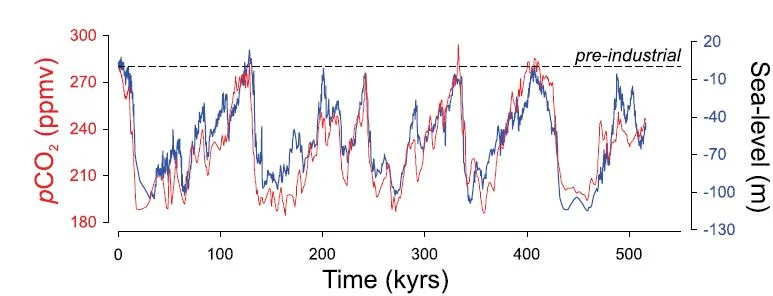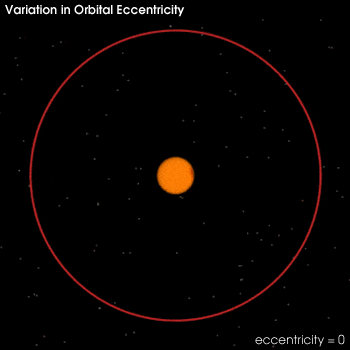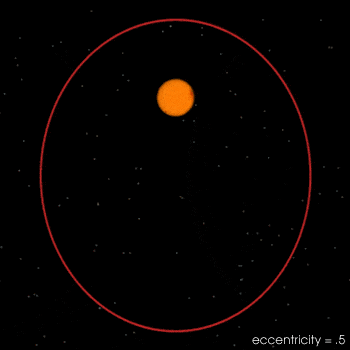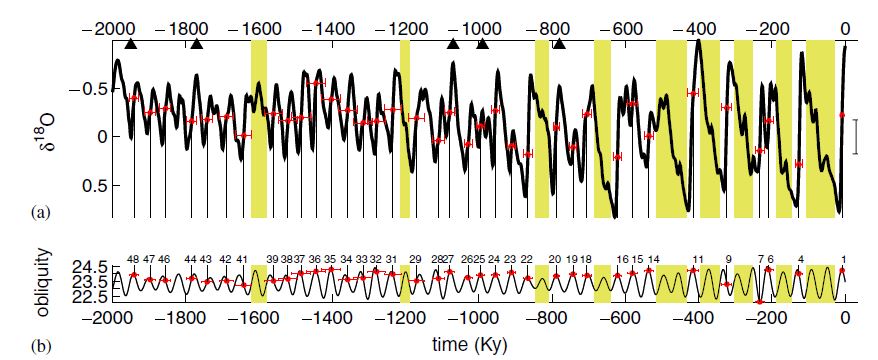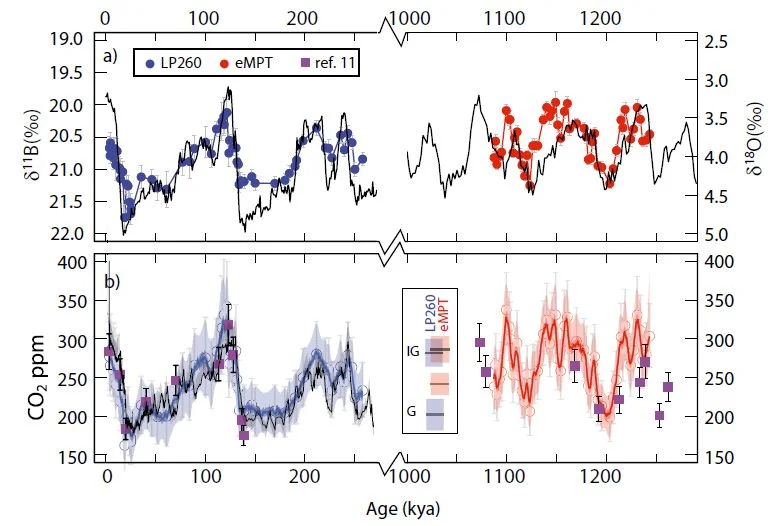A NERC funded project aiming to provide new insights into the Mid-Pleistocene Transition by generating a high-resolution record of atmospheric CO2 using boron isotopes
The relationship between atmospheric CO2 (red) and sea-level (blue) over the last 500 thousand years. From Foster and Rohling (2013)
four images showing the variations in orbit, tilt and precession
the Orbital cycles over the last 100 kyr and for 200 kyr in the future. All these orbital images from here
Background
The Earth's climate is always changing. Over the last 600 thousand years (kyr) or so, it has oscillated, roughly every 100 kyr, between warm "interglacial" periods with climates similar to today, and cold "glacial" periods when several km's of ice blanketed North America and northern Europe. Indeed, so much water was locked up as ice on land, sealevel was around 130 m lower then than today. Bubbles of ancient atmosphere trapped in ice cores from Antarctica reveal these cyclical changes were partly driven by changes in the atmospheric concentration of CO2 - a well-known potent greenhouse gas (see here for e.g.).
These natural changes in climate are paced by regular changes in the way the Earths orbits around the sun and variations in the tilt and wobble of its axis. These changes are caused by the gravitational interaction of the Earth with the other planets and were first quantified by the Serbian astrophysicist Milutin Milankovitch in the 1920s.
These changes in orbit, known as orbital cycles, influence the distribution of solar energy so that some orbital configurations favour cold northern hemisphere summers which can trigger the start of glaciations, and then later the orbit changes and this new configuration favours warm summers in the northern hemisphere - triggering deglaciation. The Earth system is incredibly complex however and a cascade of feedbacks, some of which are only poorly known, amplify this orbital forcing to enact global climate change. One important amplifier that we work on in the FosterLab is how CO2 is partitioned between the atmosphere and ocean on these timescales (see here). For more details on these orbital cycles and Milankovitch himself go here.
The MPT
During the more recent glacial cycles, cooling from peak interglacial was gradual, taking 90 kyr or so to reach glacial maximum. Deglaciation was then rapid (over around 10 kyr) so that each cylce had a "saw tooth" pattern (see figure above). Various theories abound as to exactly which orbital cycle is important for triggering deglaciation - for example the figure above suggests its the tilt of the axis (obliquity) that is key - with each of the last 10 or so big deglaciations lining up with obliquity maxima (increasing summer insolation in the Northern Hemisphere).
Before about 1.2 million years ago (before -1200 ky on figure above) there was on average less ice on the continents during glacials and the cycles were shorter (40 vs. 100 kyr), more symetrical and more closely followed an individual obliquity cycle. Gradually between 1.2 and 0.6 million years ago the character of the climate cycles shifted from these shorter, less intense cycles, to the larger and longer saw-toothed cycles. This transition, known as the Mid-Pleistocene Transition (or MPT), occured in the absence of any change in the nature of the orbital cycles. This is a major puzzle and has been said to be one of the main challenges of Milankovitch's orbital climate theory.

